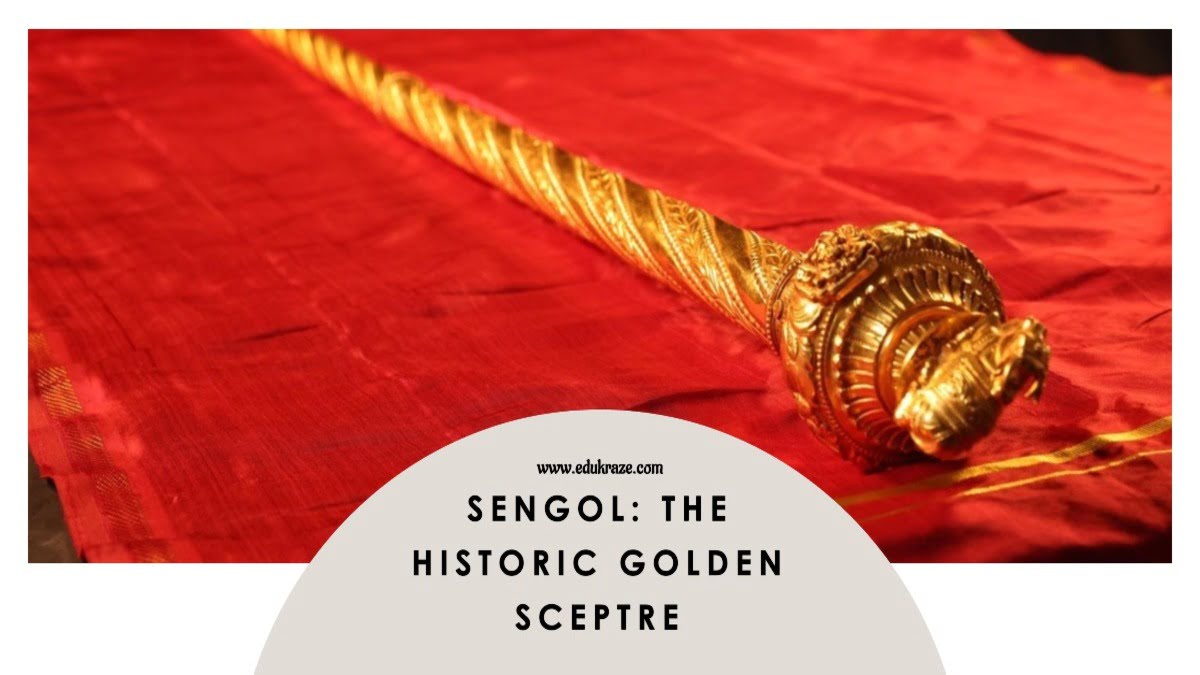Discover the remarkable Sengol, a historic golden sceptre that will grace the new Parliament Building. Its significance and opulence captivate all who behold it.
India is set to witness a momentous event on May 28, 2023, as Prime Minister Narendra Modi installs the ‘Sengol,’ a historic golden sceptre, near the Speaker’s seat in the new Parliament building. This sacred symbol holds significant meaning, representing fair and equitable governance. The installation ceremony will also serve as an opportunity to honor the dedicated workforce of around 60,000 individuals who constructed the new Parliament building in record time.
Table of Contents
1. Introduction
The Sengol, a priceless artifact, holds great historical and cultural significance for India. It was originally presented to India’s first prime minister, Jawaharlal Nehru, on the eve of Independence Day in 1947. A prominent mutt in Tamil Nadu, known as the Thiruvavaduthurai Adheenam, gifted this exquisite sceptre to Nehru, symbolizing the trust of the Indian people and their aspirations for a new and independent nation.
2. The Significance of Sengol
The Sengol serves as a powerful reminder of India’s journey towards independence, the sacrifices made, and the dreams held by its citizens. This sacred symbol encapsulates the trust placed in leaders and the collective hope for a better future. Its installation in the new Parliament building signifies the continuity of India’s democratic tradition and its unwavering commitment to justice, freedom, and peace.
3. History and Origins
The origins of the Sengol can be traced back to the Chola dynasty, a prosperous empire that ruled over India. Rooted in Tamil tradition, this historical artifact carries immense cultural value. The Tamil word “semmai,” meaning righteousness, gives rise to the name “Sengol.”
4. Symbolism and Meaning
Crafted from gold and silver, the Sengol spans an impressive length of five feet. Its intricate carvings depict various Hindu deities, including Vishnu, Shiva, and Lakshmi. Atop the sceptre rests a miniature replica of Nandi, the revered bull associated with Lord Shiva. Each element symbolizes different facets of Hindu mythology, spirituality, and the nation’s rich heritage.
5. The Sengol’s Journey to the New Parliament Building
Since its presentation to Nehru, the Sengol has held a place of honor in the Parliament of India. This sacred artifact serves as a poignant reminder of the struggles and aspirations of the Indian people. The decision to install the Sengol in the new Parliament building underscores the deep connection between cultural heritage and the shaping of India’s future.
6. The Inauguration Ceremony
The installation of the Sengol in the new Parliament building will take place during a grand inauguration ceremony. Prime Minister Narendra Modi will play a pivotal role in this historic event. The symbolism behind the installation reflects the core values of Indian democracy and emphasizes the nation’s commitment to justice, freedom, and peace.
7. Honoring the Workers
The inauguration ceremony will also provide an opportunity to express gratitude to the approximately 60,000 workers who dedicated their efforts to constructing the new Parliament building. Their hard work and commitment enabled the completion of this monumental project within a remarkable timeframe. Their contribution will be recognized and celebrated alongside the installation of the Sengol.
8. The Sengol as a Cultural Heritage
The Sengol embodies the rich cultural heritage of India, representing the country’s diverse traditions, history, and artistic excellence. Its intricate craftsmanship reflects the skill and artistry of the Chola craftsmen from centuries past. Preserving and honoring the Sengol allows future generations to connect with India’s vibrant past and appreciate the enduring legacy of its cultural treasures.
9. Preserving India’s History and Culture
By installing the Sengol in the new Parliament building, India demonstrates its commitment to safeguarding and promoting its history and culture. This act serves as a testament to the importance of preserving and cherishing national heritage, fostering a sense of pride, and connecting the present with the past.
10. Sengol’s Role in Indian Democracy
The Sengol symbolizes the core tenets of Indian democracy. As it finds its place in the new Parliament building, it serves as a constant reminder of the nation’s democratic ideals, the trust bestowed upon leaders by the people, and the collective aspiration for a just and equitable society. It reinforces the principles upon which the nation was founded.
11. The Message of Fair and Equitable Governance
The installation of the Sengol highlights the significance of fair and equitable governance. This sacred symbol encapsulates the hopes and expectations of the Indian populace, signifying their desire for a government that upholds justice, promotes equality, and ensures the welfare of its citizens. It serves as a guiding light for policymakers and leaders, reminding them of their responsibility to the people they serve.
12. Promoting Justice, Freedom, and Peace
The Sengol embodies the values of justice, freedom, and peace. Its presence in the new Parliament building sends a powerful message that these principles remain at the forefront of India’s governance. It acts as a catalyst for upholding these ideals, inspiring leaders and citizens alike to work towards a society that is fair, inclusive, and harmonious.
13. Connecting the Past with the Future
As the Sengol transcends time and connects India’s rich history with its future, it creates a profound sense of continuity. This symbolic installation bridges the gap between generations, fostering a deeper understanding and appreciation for the nation’s heritage. It serves as a reminder that the actions of today shape the path for future generations.
14. The Importance of Cultural Heritage
The installation of the Sengol highlights the invaluable role of cultural heritage in shaping a nation’s identity. By preserving and showcasing historical artifacts like the Sengol, India showcases its diverse cultural tapestry and the wealth of its ancient traditions. Cultural heritage acts as a unifying force, instilling a sense of pride and belonging among citizens.
15. Conclusion
The installation of the Sengol in the new Parliament building is a momentous occasion for India. This historic golden sceptre serves as a timeless symbol of the nation’s trust in its leaders, its commitment to justice, freedom, and peace, and its rich cultural heritage. It stands as a testament to the sacrifices made for independence and the aspirations of the Indian people. As India looks towards the future, the Sengol acts as a guiding light, reminding citizens of their shared values and the importance of preserving the nation’s history and culture.
FAQs
1. What is the Sengol?
The Sengol is a historic golden sceptre that holds great cultural and historical significance for India. It was originally presented to Jawaharlal Nehru, India’s first prime minister, as a symbol of trust and hope for a new and independent nation.
2. What does the Sengol symbolize?
The Sengol symbolizes fair and equitable governance, justice, freedom, and peace. It represents the aspirations of the Indian people and serves as a reminder of the sacrifices made for independence.
3. Why is the installation of the Sengol significant?
The installation of the Sengol in the new Parliament building signifies the continuity of India’s democratic tradition and its commitment to justice, freedom, and peace. It also highlights the importance of preserving cultural heritage and connecting the past with the future.
4. What role does the Sengol play in Indian democracy?
The Sengol embodies the principles of Indian democracy and represents the trust placed in leaders by the people. It serves as a constant reminder of the nation’s democratic ideals and the collective aspiration for a just and equitable society.
5. How does the Sengol connect India’s history with its future?
By installing the Sengol in the new Parliament building, India bridges the gap between generations and fosters a deeper understanding of its heritage. It highlights the importance of preserving cultural treasures for future generations to appreciate and cherish.
Thank you for joining us on this captivating journey through the history and significance of the Sengol. Subscribe to our newsletter for more updates on the new Parliament Building and follow us on social media for exclusive behind-the-scenes content.
























